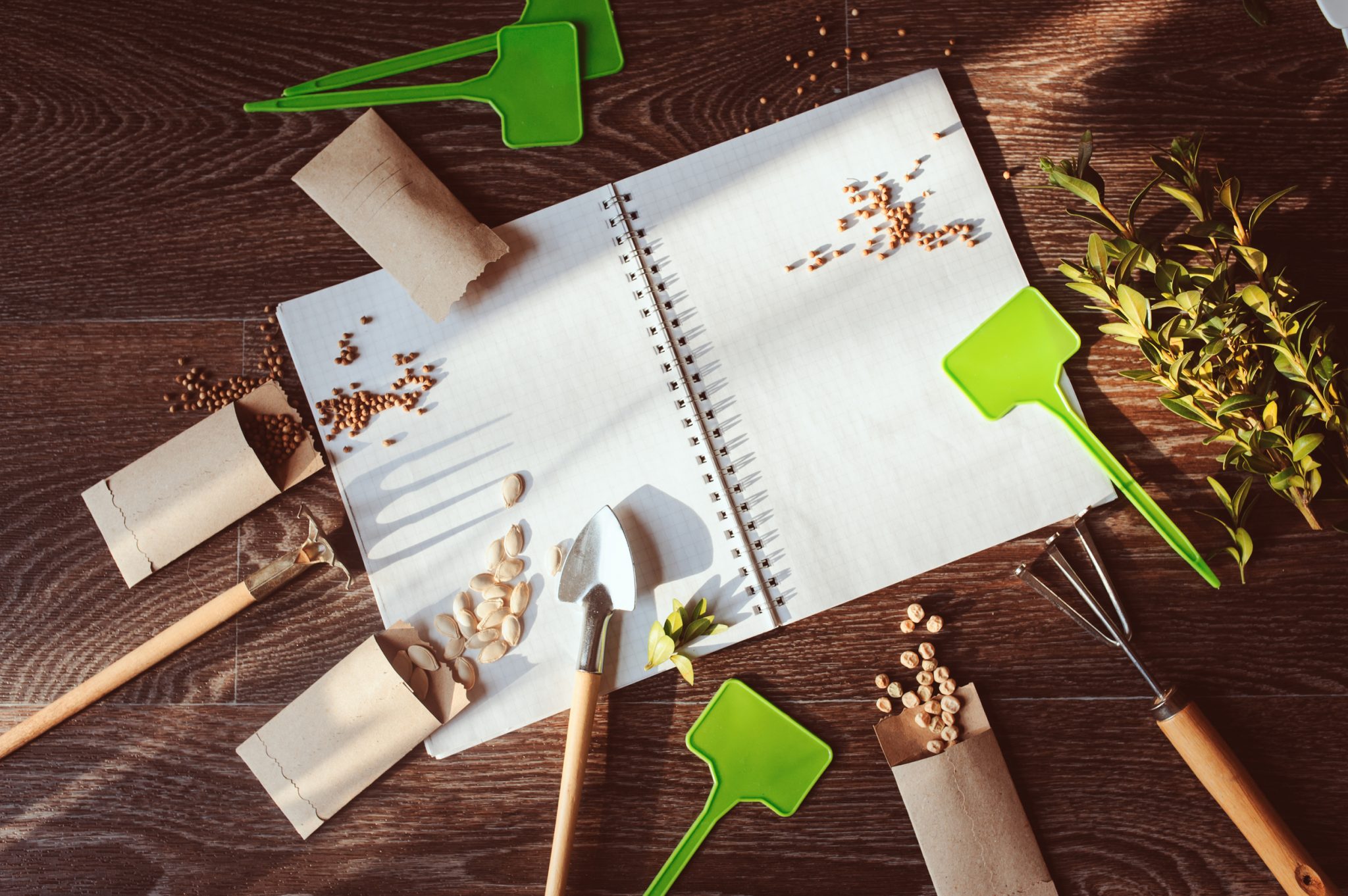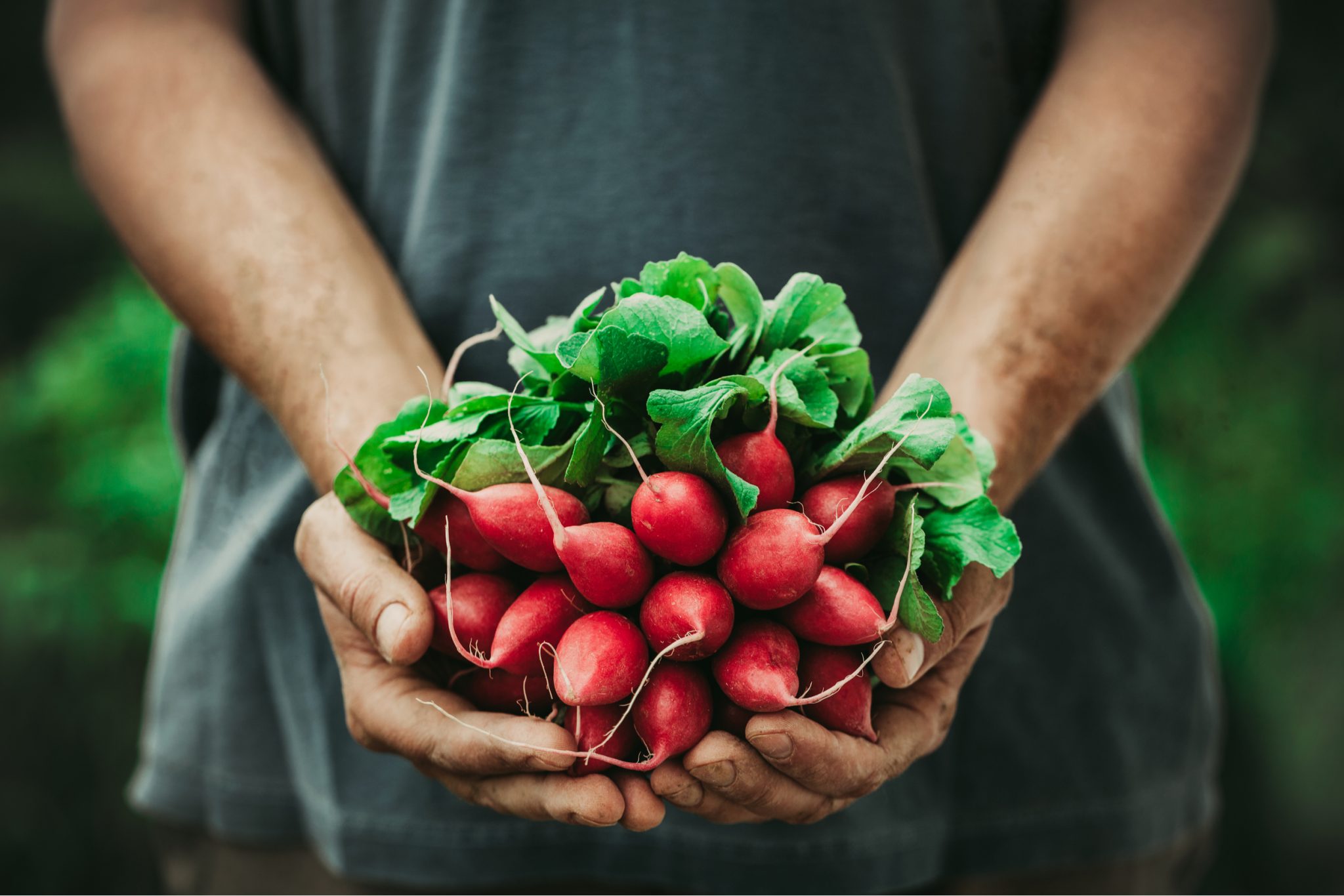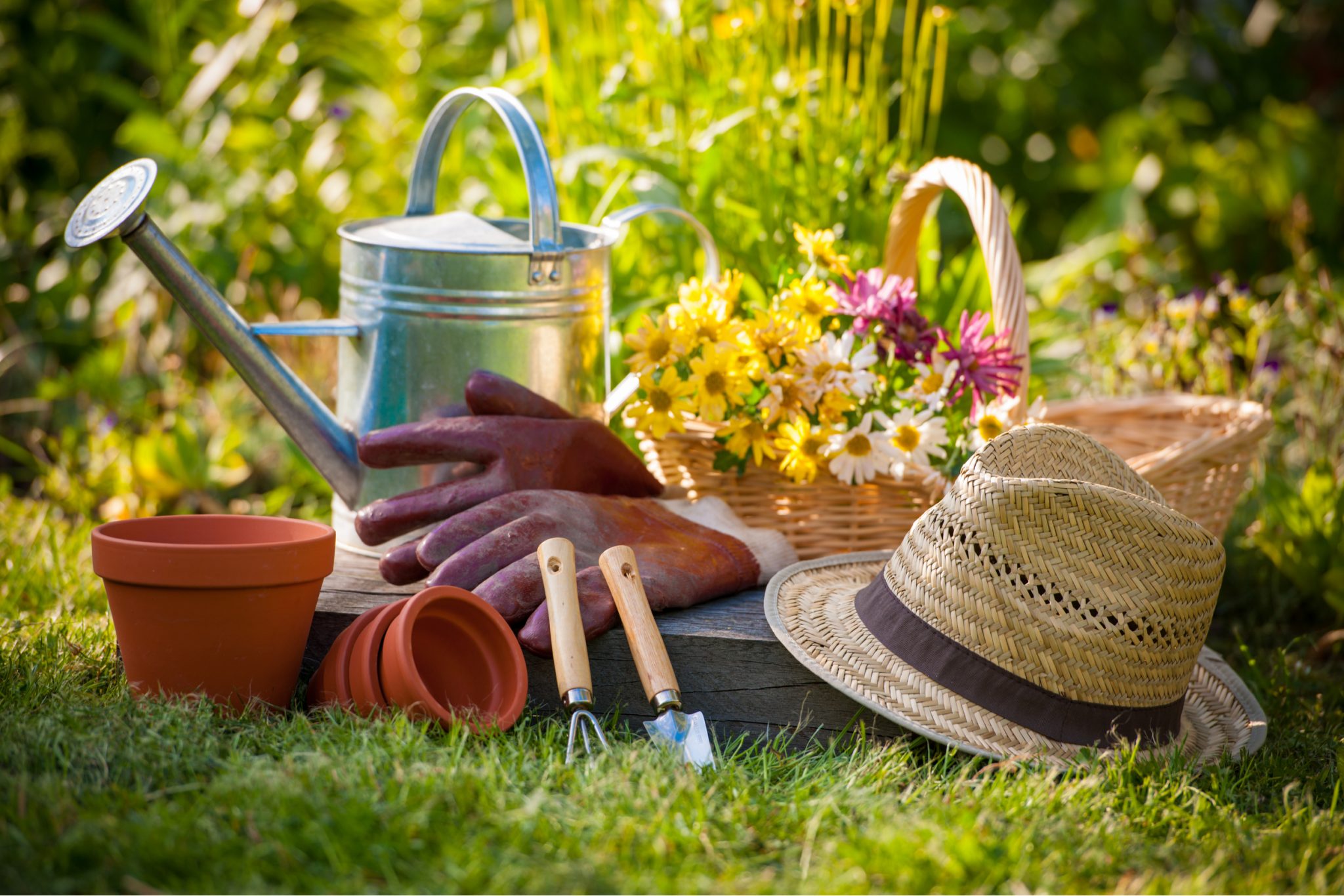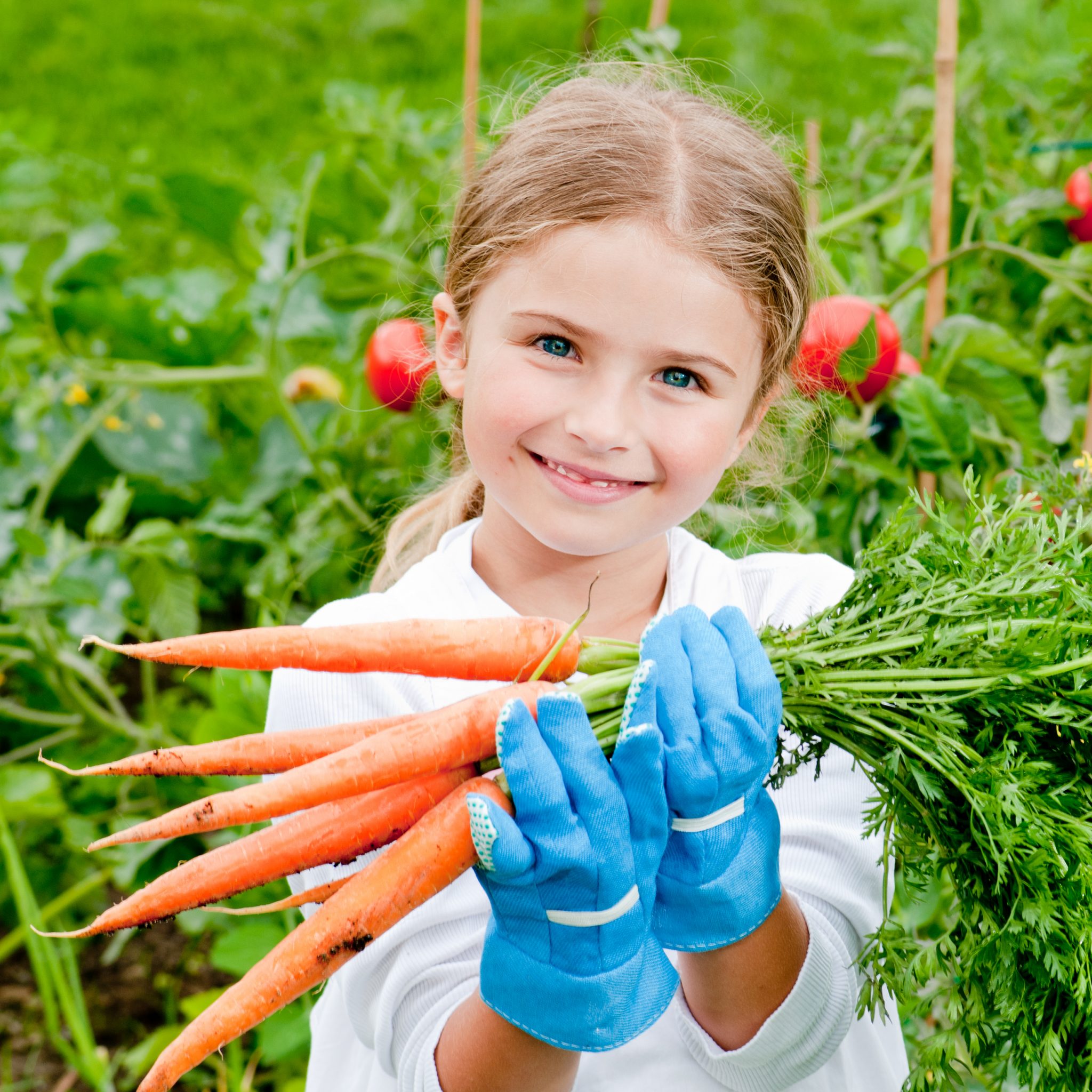What Tro Put In A Beginner Vegetasble Garden
The Complete Guide to a Beginner's Vegetable Garden
Why Start a Backyard Vegetable Garden?
If you are considering a backyard vegetable garden, here are just a handful of reasons why starting one is a great idea:
- Growing your own food means knowing exactly where it comes from and knowing how to grow vegetables.
- Growing food with your kids is a great way to teach them where food comes from and how it is grown.
- You get to control what is and is not put on the food grown in your garden, such as pesticides or chemical fertilizers.
- Starting a garden is a great way to eat as locally as possible, which reduces your carbon footprint.
- Foods grown in a backyard vegetable garden go straight from the ground or vine to your kitchen, which means they are fresher and more nutrient-dense, since they didn't spend weeks traveling to grocery stores or sitting in the produce section.
- When you have your own garden, you can save money by growing higher-priced produce instead of buying it.

Backyard Vegetable Garden Basics: Getting Started
Once you have decided to grow some of your own food, you will need to start planning your garden. Here are 10 tips to help you be on your way to a successful harvest.
1. Choose a sunny location.
Choose a spot in your yard that receives at least six hours of sun each day. There are some foods that grow well in shade, such as lettuces and some other leafy greens, so do not give up if you do not have a sunny spot in your yard that is large enough for a garden; you still have options.
2. Consider raised garden beds.
You can grow your vegetables in the ground, but you might want to consider raised garden beds. Raised beds allow you to more easily control the soil you are growing in and are easier on your back and knees.
3. Prepare the soil.
If you are growing in the ground, you may need to amend the soil to affect the pH or increase drainage. This is particularly true if you have the clay soil that is so common in Southern California. One easy way to improve your soil is to mix in compost before you begin planting. You may also want to mix in a natural fertilizer to increase your harvest.
4. Make sure you have access to a water source.
When you are choosing the spot for your backyard vegetable garden, make sure you have access to a water source nearby. The best option is to install an automatic drip system that will water your plants near the roots and help you save water while also saving time, since you will not have to drag a hose around to water each plant. However, if an automatic irrigation system is not part of your plan, you can always water your plants with a hose or watering can.
5. Create a vegetable garden planner.
Planning your garden before you begin planting lets you know how much space you are working with and how many plants to buy (or seeds to plant). Do a little research on the plants you want to grow to find out how much room each plant needs and which plants they like or do not like to grow near.
Making a vegetable garden planner also allows you to have a record of what you planted and where you planted it. This will make it easier to plant your garden next year and allows you to keep records for crop rotation. Remember, some plants can only be grown in the same spot for two or three years in order to reduce the risk of disease. You also want to rotate your crops because some plants take particular nutrients out of the soil more than others. Rotating your crops each year helps you to have healthier plants and more abundant harvests.

6. Decide what to plant.
Your backyard vegetable garden should be filled with foods that you and your family enjoy eating. Since a small garden is not going to supply all of your produce needs, consider supplementing your grocery shopping with foods you eat often. Alternatively, you may want to choose one or two plants that produce vegetables you have not tried, since that allows you to try new things without wasting space if you end up not enjoying them as much as you thought you might.
If part of the reason you are starting a vegetable garden is to save money on your grocery bill, consider growing more expensive foods or foods where there tends to be a big price jump between those that are conventionally grown and those that are organically grown. Since you can grow your own food using only organic methods, a garden is a great way to get organic produce for much less than you would spend at the store.
7. Consider starting with seedlings.
While you can certainly jump right into growing from seeds, many folks learning how to grow vegetables prefer to start with small plants from their local nursery. Starting from seedlings means less time between planting and harvesting, and it requires less time and effort to get your garden going. As your gardening skills improve, you can start to grow some or all of your plants from seeds. You can even save seeds from each season's harvest to plant the following year.
8. Label your rows or plants.
When first learning how to grow vegetables, you may not be able to easily identify plants, particularly before they bear fruit. Therefore, labeling your plants or rows of the same plant will help you identify different plants in your garden. This is particularly important if you grow food plants that have different irrigation needs.
Pro Tip: When labeling your rows, add the date you planted and the date when they should be ready to harvest. This will help take the guesswork out of when to start pulling carrots out of the ground or if that pepper is really orange enough to pick.
9. Have a plan to protect your plants.
Some plants, such as tomato plants, need cages for support and to help keep them under control. Others, such as vining beans, need a trellis or pole to climb. If you have a lot of snails in your yard, you may need to run copper tape around your raised beds to ward them off. If rabbits or deer frequent your backyard, you may need to protect your plants with cloches or chicken wire. You might want to plant marigolds around the border of your garden to stave off other common garden pests.
Once you decide what you want to grow, do a little research to learn about common diseases and pests. This will help you determine with protective measures are right for your garden.

10. Make sure you have the right tools.
You do not need a lot of tools to successfully start a backyard vegetable garden, but having a few on hand will make your life easier and make the whole experience more enjoyable. For example, a trowel will make planting seedlings much easier, gloves will protect your hands, a garden hose or watering can is necessary for irrigation, and a hoe will help you make quick work of weeding. If you have the space and your budget allows, investing in a good wheelbarrow will help you easily cart around plants, bags of soil or compost from your backyard compost pile.
For more tips on starting a vegetable garden, check out Vegetable Garden 101: Top 10 Gardening Mistakes to Avoid.
Small Space Backyard Vegetable Garden Options
Part of the above list is specific to growing in the ground or in raised garden beds; however, you do not need this kind of space when you are learning how to grow vegetables. You can just as easily grow food plants in hanging containers, window boxes, or a container garden on your porch or balcony. No matter how little room you have, you can find a spot to grow at least a small amount of food. If floor space is really at a premium in your backyard or on your porch, you can even grow food in a vertical garden hanging on the wall. Kale, spinach and other leafy greens do particularly well in vertical gardens.

5 Vegetables for Beginner Gardeners
It can be tempting to grow a wide variety of foods right away, but it is best for beginner gardeners to start their backyard vegetable gardens with just a few varieties. As you learn more about how to grow vegetables, you can expand your garden to include a wider variety of foods, but starting a bit smaller allows you to learn about each plant you are growing and allows you to build your gardening confidence. Once you have mastered growing some of the easier options, such as tomatoes or carrots, you can expand your skillset to growing foods that require a bit more effort or experience, such as cauliflower or broccoli.
1. Radishes
Radishes top the list because they are so easy to grow and are ready to harvest in as little as three weeks. This makes them great for beginner gardeners, impatient gardeners, and anyone gardening with children. These you are going to grow from seed, which you will want to place in rows that are four to six inches apart. Plant the seeds about one-half inch below the soil line. Once they begin to grow, you will need to thin the rows out so that each radish has about two inches of space on all sides. In most conditions, you will need to water your radishes once or twice per week.
Pro Tip: Since radishes mature so quickly, this is an easy one for succession planting. Plant one row the first week, your second row the second week and a third row in week three. Once you harvest the row you planted the first week, replant it for an even longer harvesting season.
Learn more about growing radishes with this guide.
2. Carrots
This is another vegetable you will grow from seed. Carrots are incredibly easy to grow and can be planted one row at a time over several weeks for an ongoing harvest. Carrot seeds are tiny, so, while you can plant them in rows, you might find it easier to just sprinkle them in the area you have dedicated to growing carrots. Once they start growing, you will thin them out anyways, since each carrot wants about three inches of space in which to grow. You will need to water your carrots frequently until they begin to grow, then you can back off to once or twice each week. Each variety of carrot will have a different maturity date, but you can expect most varieties to be ready to harvest at around 70 days after planting.
Learn more about growing carrots here.
3. Tomatoes
Growing tomatoes takes a bit more effort than growing radishes or carrots, but this popular backyard garden option is perfect for beginners and is still easy to grow. The easiest thing to do is buy a tomato plant in a large pot with a cage attached. These are widely available at garden centers and take all of the guesswork out of planting and caging your tomatoes. You can keep your tomatoes in these pots their entire life, so this is an ideal option for folks with limited space or who do not want to deal with planting and caging.
If you do choose to plant your tomatoes in the ground or in raised garden beds, you will purchase seedlings at your local nursery, and then bury them with about two-thirds of the stem underground. If you choose determinate tomato plants (which grow like a bush), you can plant them about two feet apart. If you plant indeterminate varieties (which grow like a vine), you will need to plant them about three feet apart. Don't forget to place cages around them while they are small. Established tomato plants can be watered once a week. In times of drought, you will need to water them twice a week.
Your tomato plants will produce tomatoes throughout the season, so this is not a one-time harvest. As the tomatoes become ripe, gently remove them from the plants and store them at room temperature.
You can learn more about growing tomatoes with this guide.
4. Kale
You can grow kale from seeds or purchase plants at a nursery. Either way is easy. Whether you grow from seeds or plants, you will ultimately want your plants about one foot apart. Once your plant is established and producing an abundance of leaves, harvest the outer leaves to encourage the growth of new leaves. Once established, you can usually water your kale plants once per week, but you will need to up that to twice per week during the hotter months of summer.
You can get more tips for growing kale here.
5. Bell Peppers
You can grow bell peppers from seeds, but it is easier for beginner gardeners to purchase plants at a local garden center. Plant your peppers in a sunny spot with each plant about 18 inches apart. It is a good idea to place a cage around the plant or to stake the plant to assist it in bearing the weight of the peppers as they develop. Keep the soil moist but not soggy until your plants are established. Once established, water once per week. As with most food plants, you will likely need to water more often during times of drought. Each variety has a different number of days between planting and harvesting, so be sure to check the seed packet or plant tag to have an idea of when your peppers will be ready. When your peppers are fully developed and the correct color, use garden shears to gently remove them from the plant.
Learn more about growing peppers in your backyard vegetable garden with this guide.
What Tro Put In A Beginner Vegetasble Garden
Source: https://www.installitdirect.com/learn/beginners-vegetable-garden/
Posted by: loafters.blogspot.com

0 Response to "What Tro Put In A Beginner Vegetasble Garden"
Post a Comment